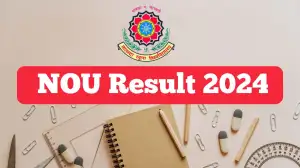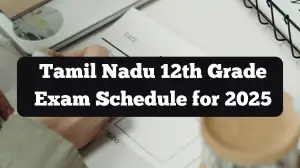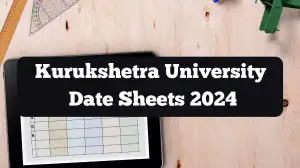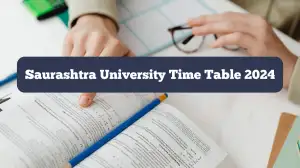CUET History Syllabus 2025 at exams.nta.ac.in Check And Download PDF Here
by Keerthika | Updated Sep 03, 2024
CUET History Syllabus 2025 at exams.nta.ac.in
Common Universities Entrance Test (CUET) can access the CUET 2025 syllabus PDF for all subjects, including Accountancy, Economics, Physics, Computer Science/Informatics Practices, Chemistry, Mathematics/Applied Mathematics, the General Test, and various languages, on this page. The National Testing Agency (NTA) has made the CUET syllabus available on the official website - cuetug.ntaonline.in. Note that the CUET exam syllabus is distinct for UG and PG courses.
|
CUET 2025 Exam Overview |
Details |
|---|---|
|
Total Subjects |
61 subjects (33 languages, 27 domain-specific, and 1 General Test) |
|
Number of Subjects to Choose |
Maximum of 6 subjects (4 or 5 domain subjects including General Test and 1 or 2 languages) |
|
CUET Mode |
Hybrid Mode (Computer-Based Test/Pen & Paper) |
|
Type of Questions |
Multiple Choice Questions (MCQs) |
|
Duration |
45 minutes; 60 minutes for subjects like Accountancy, Economics, Physics, Computer Science/Informatics Practices, Chemistry, Mathematics/Applied Mathematics, and General Test |
|
Medium |
13 Languages: Assamese, Bengali, English, Gujarati, Hindi, Kannada, Malayalam, Marathi, Punjabi, Odia, Tamil, Telugu, and Urdu |
|
CUET Syllabus |
Language Subjects: Reading Comprehension (Factual, Literary, and Narrative passages), Literary Aptitude, and Vocabulary |
|
Domain Subjects: Based on Class 12 syllabus |
|
|
General Test: General Knowledge, Current Affairs, General Mental Ability, Numerical Ability, Quantitative Reasoning (basic mathematical concepts), Logical and Analytical Reasoning |
CUET History Syllabus 2025
Unit I: The Story of the First Cities - Harappan Archaeology
Broad Overview: Focus on early urban centers.
Story of Discovery: Exploration of the Harappan civilization.
Excerpt: Archaeological reports on a significant site.
Discussion: Examination of how archaeologists and historians have utilized these findings.
Unit II: Political and Economic History - How Inscriptions Tell a Story
Broad Overview: Political and economic history spanning from the Mauryan to the Gupta period.
Story of Discovery: Decipherment of inscriptions and the evolution of our understanding of political and economic history.
Excerpt: Asokan inscriptions and land grants from the Gupta period.
Discussion: Interpretation of inscriptions by historians.
Unit III: Social Histories Using the Mahabharata
Broad Overview: Social history issues such as caste, class, kinship, and gender.
Story of Discovery: The transmission and publication of the Mahabharata.
Excerpt: Passages from the Mahabharata, showing its historical use.
Discussion: How historians have interpreted the text.
Unit IV: A History of Buddhism - Sanchi Stupa
Broad Overview: (a) Overview of religious histories including Vedic religion, Jainism, Vaishnavism, and Shaivism. (b) Focus on Buddhism.
Story of Discovery: The discovery of the Sanchi Stupa.
Excerpt: Reproductions of sculptures from Sanchi.
Discussion: Analysis of the interpretation of these sculptures by historians and other sources for reconstructing Buddhist history.
Unit V: Medieval Society Through Travellers’ Accounts
Broad Overview: Social and cultural life as depicted in travellers' accounts.
Story of Their Writings: Discussion on where travellers went, their motivations, and their audience.
Excerpts: Passages from Alberuni, Ibn Battuta, and Bernier.
Discussion: What these travel accounts reveal and how historians have interpreted them.
Unit VI: Religious Histories - The Bhakti-Sufi Tradition
Broad Overview: (a) Overview of religious developments during the period. (b) Ideas and practices of Bhakti-Sufi saints.
Story of Transmission: Preservation of Bhakti-Sufi compositions.
Excerpt: Selected works from the Bhakti-Sufi tradition.
Discussion: Historians' interpretations of these works.
Unit VII: New Architecture - Hampi
Broad Overview: (a) Overview of new buildings during the Vijayanagara period, including temples, forts, and irrigation systems. (b) Relationship between architecture and the political system.
Story of Discovery: The rediscovery of Hampi.
Excerpt: Visuals of Hampi’s structures.
Discussion: Historians’ analyses and interpretations of these architectural structures.
Unit VIII: Agrarian Relations - The Ain-i-Akbari
Broad Overview: (a) Structure of agrarian relations in the 16th and 17th centuries. (b) Patterns of change over time.
Story of Discovery: Compilation and translation of the Ain-i-Akbari.
Excerpt: Passages from the Ain-i-Akbari.
Discussion: Historians' use of the text to reconstruct history.
Unit IX: The Mughal Court - Reconstructing Histories Through Chronicles
Broad Overview: (a) Outline of political history from the 15th to 17th centuries. (b) Discussion on the Mughal court and its politics.
Story of Discovery: The production, translation, and transmission of court chronicles.
Excerpts: Passages from the Akbarnama and Padshahnama.
Discussion: How historians have used these texts to reconstruct political histories.
Unit X: Colonialism and Rural Society - Evidence from Official Reports
Broad Overview: (a) Life of zamindars, peasants, and artisans in the late 18th century. (b) East India Company’s revenue settlements and surveys. (c) Changes in rural society during the 19th century.
Story of Official Records: Reasons behind official investigations into rural societies and the types of records produced.
Excerpts: Passages from Firminger’s Fifth Report, Francis Buchanan-Hamilton's accounts, and the Deccan Riots Report.
Discussion: What these official records reveal and omit, and how historians have used them.
Unit XI: Representations of 1857
Broad Overview: (a) The events of 1857-58. (b) How these events were recorded and narrated.
Focus: The city of Lucknow.
Excerpts: Pictures of 1857 and contemporary accounts.
Discussion: How these depictions shaped British opinions of the events.
Unit XII: Colonialism and Indian Towns - Town Plans and Municipal Reports
Broad Overview: Growth of Mumbai, Chennai, hill stations, and cantonments during the 18th and 19th centuries.
Excerpts: Photographs, paintings, and city plans, with a focus on Kolkata town planning.
Discussion: How these sources can reconstruct the history of towns and their limitations.
Unit XIII: Mahatma Gandhi Through Contemporary Eyes
Broad Overview: (a) The nationalist movement from 1918 to 1948. (b) The nature of Gandhian politics and leadership.
Focus: Mahatma Gandhi in 1931.
Excerpts: Reports from English and Indian language newspapers, and other contemporary writings.
Discussion: How newspapers serve as a source of history.
Unit XIV: Partition Through Oral Sources
Broad Overview: (a) The history of the 1940s. (b) Nationalism, communalism, and Partition.
Focus: Punjab and Bengal.
Excerpts: Oral testimonies from those who experienced Partition.
Discussion: How these oral sources have been analyzed to reconstruct the history of the event.
Unit XV: The Making of the Constitution
Broad Overview: (a) Independence and the formation of the new nation-state. (b) The making of the Constitution.
Focus: The Constituent Assembly debates.
Excerpts: Passages from the debates.




